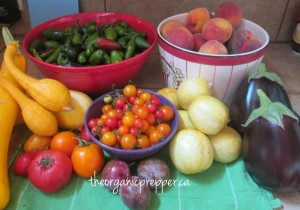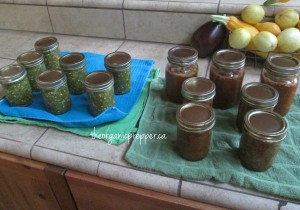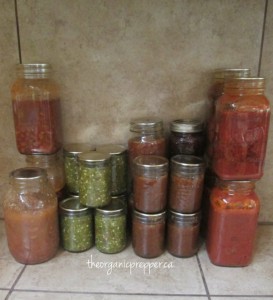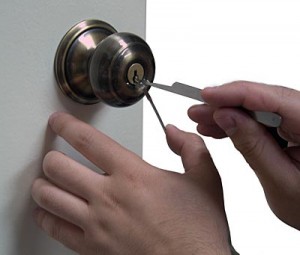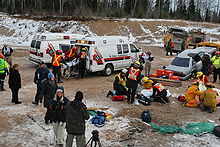This article was written by Red C.J. and originally posted here, on The Survivalist Blog.net I am reposting it with permission from M.D. Creekmore.
My prepping challenge is preparing with post-disaster chronic illness or chronic pain, and this is for the many others with chronic illness(es) or their loved ones. My situation is far from unique, as one-third to one-half of Americans live with chronic illness or chronic pain. Millions of us live with high blood pressure, Alzheimer’s or dementia, heart disease, depression, arthritis, osteoporosis, pulmonary disease such as COPD, diabetes, cancer or stroke. So how can we prepare to survive in a post-disaster world?
First, a bio: At age 36, I started seeing chiropractors regularly for spinal problems. At age 40, a rheumatologist diagnosed me with fibromyalgia, and daily pain medicines began a year later. My pain gradually affected almost every aspect of my life. After living with daily pain for 5-8 years, it became like my shadow; I could not escape it.
In a grid-down situation, I fear that I would not be able to be productive and perhaps be seen as a liability for my family and community. In a post-disaster setting, without the support of the medical system, my productivity would be very limited. Will there be a place or role in a post-disaster world for a person who is disabled, or unable to function physically or mentally? The fictional stories I’ve read describe local social settings in which everyone can work and contribute, even the elderly. What would happen to those who could not work or contribute only minimally?
I read about others preparing to bug out by carrying a 50 lb. backpack and shudder, as that’s physically impossible for me, given my degenerative spinal problems. Thus I’ll be hunkering down with family at home, rather than suffering on the road. Your decision to bug out or stay home depends on your situation.
I learned to be ACTIVE in maintaining my health. I exercise 5-6 days per week, because exercise releases endorphins that are natural pain relievers, and because exercise improves my sleep level. Exercise is recommended for some kinds of chronic pain. I watch my diet and have lost over 15 lbs. this year. I read about my chronic conditions, and change my lifestyle when appropriate. Become as active as possible to maintain or improve your health.
My regular treatments include electronic stimulation, chiropractic adjustments, and massage therapy. In a post-disaster situation, I hope to trade or barter for massages and chiropractic treatments, but realize that electronic stimulation may not be available at my chiropractor’s office where I receive it. Planning to barter means stocking things that others will need in a post-disaster scene.
Medical preparations I’ve made:
Having been taking daily meds for years, I learned to get refills early, to prevent any days without meds. So I’d order my prescription refills 2-3 days early, before it expired. Gradually, I discovered I could get refills 4-5 days earlier. Doing this every month for about 7-8 months would result in an extra month’s worth of pills. Than another 7-8 months resulted in a 2nd extra bottle. I have a 3rd bottle of a few meds I’ve been on for years. I did not feel a need to tell my doctor or pharmacist. This method of collecting extra prescription meds has worked well with our health insurance from a major insurance company. It does, of course, require extra copays, and attention paid to securely storing them at room temperature.
This method is limited to long-term meds. A word of caution: If your doctor has reason to suspect you of drug abuse or meds shopping, then this strategy will fail. My wife is the only one who knows of my extra meds, because I don’t want our home to become a target for meds theft. Only my current meds would be seen in our bedroom; the extras are hidden in a secure place.
We have a supply of low-cost Over-the-counter (OTC) stuff like Capzasin, Stopain, Salonpas pads, 024 Pain Neutralizer (see www.024zone.com) and Epsom salt for my chronic pain.
Dry mouth is a common problem for us who take meds. Our food stocks include a supply of cough drops, hard candy butterscotches for the dry mouth caused by my pain meds. Oralbalance Biotene (www.biotene.com) and OraHealth XyliMelts (www.OraHealth.com) are OTC products for dry mouth.
Electronic stimulation and electronic therapy are proven to reduce fibromyalgia pain and stiffness, as well as other muscular pain or tension. I have extra 9-volt batteries for my electronic alpha-stim unit (see www.alpha-stim-com), plus rechargeable batteries and 2 small solar rechargers.
I purchased a Duracell Powerpack 600 for my cpap, to use when the electrical grid fails; testing it showed that it provided electric power for one and a half nights for just my cpap.
Future medical preps:
-Get a solar unit to recharge my Duracell Powerpack 600 for my cpap. We’re live in an area that gets lots of sunshine. Beyond that, an extra power pack & solar unit to recharge would provide enough power to run my cpap for 3 nights.
-Growing herbs for my health conditions is a possibility I need to research more. In my experience, herbs are not enough for my pain level, but they may be better than nothing after my meds run out.
Despite all these medical preparations, I realize that my life will be much harder if a disaster results in long-term loss of electricity and the medical system, given my physical limits and dependence on the U.S. medical system
I may never need to use my medical preps. But if and when needed, my medical preps are there to cushion the hardships of a post-disaster, grid-down situation. If you or your loved one lives with chronic pain or chronic illness, I sincerely hope a few of these ideas will help your medical preparations.
Since the specific medical problems you or your loved one faces may be different from mine, customize your prepping for your specific illness(es). May God bless and may His Spirit guide you.

